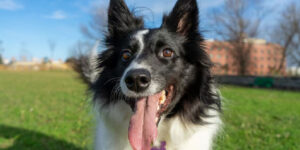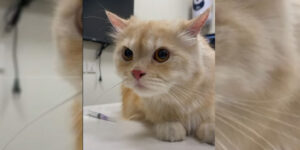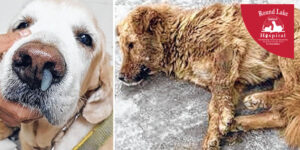The transitional period from March to May heralds a distinct shift in animal health dynamics and Diseases in Animals. As the environment transforms with burgeoning warmth and increased humidity, a complex interplay of factors predisposes animals to specific diseases.
Seasonal fluctuations not only alter pathogen viability but also influence host susceptibility, thereby engendering observable epidemiological trends.
Seasonal Trends in Animal Health: Understanding Disease Patterns
Variability of seasons exerts a profound impact on animal health. As temperatures ascend and humidity stabilizes, environmental conditions become conducive to the proliferation of pathogens.
The metamorphosis of weather patterns during these months coincides with an elevated incidence of certain diseases in animals. March to May, in particular, sees an upsurge in infections due to increased vector activity and altered immune responses in animals.
Such temporal patterns demand vigilant observation, as they herald potential outbreaks that require prompt intervention.
Canine Parvovirus: A Deadly Threat in Warmer Months
Symptoms: How to Identify the Early Signs of Parvovirus
Canine parvovirus, an insidious and often fatal pathogen, frequently emerges during the spring. Early clinical manifestations include severe lethargy, anorexia, and profuse vomiting. Subtle signs—such as a slight drop in activity or a transient fever—may presage more ominous developments.
Causes: Why the Virus Spreads Rapidly in Spring
The virulence of parvovirus is augmented by the warmer clime; higher temperatures facilitate the virus’s persistence in the environment. Crowded conditions in communal areas, coupled with insufficient hygiene, further expedite its transmission among susceptible canines. The pathogen’s resilience in contaminated environments renders it particularly formidable during these months.
Prevention: Essential Vaccinations and Hygiene Practices
Prevention remains the cornerstone of combating canine parvovirus. A rigorous vaccination regimen, commenced at an early age and reinforced periodically, is indispensable. Concurrently, meticulous sanitation of communal spaces and prompt isolation of symptomatic animals constitute critical preventive measures.
Treatment: Medical Interventions and Supportive Care
Once parvovirus infection is established, intensive supportive care is paramount. Fluid therapy, antiemetics, and broad-spectrum antibiotics are often employed to mitigate dehydration and secondary infections. Early intervention can ameliorate the disease’s course, yet the prognosis remains guarded in severe cases.
Tick-Borne Diseases: The Hidden Dangers of Spring
Common Tick-Borne Illnesses Affecting Pets and Livestock
Springtime awakens a plethora of tick-borne maladies. Infections such as Lyme disease, Ehrlichiosis, and Anaplasmosis are commonly documented in both pets and livestock. These insidious diseases may manifest subtly, often eluding early detection.
How Ticks Become More Active in Warmer Weather
Ticks thrive in the temperate conditions that characterize spring. As ambient temperatures rise, their metabolic rates accelerate, augmenting their quest for hosts. Vegetative cover and increased outdoor activity create ideal conditions for tick proliferation.
Symptoms: Early Warning Signs of Infections
The initial indicators of tick-borne diseases in animals may include fever, lethargy, and joint discomfort. In some cases, a distinctive rash or localized swelling may be observed. Recognizing these early signs is critical to prevent the progression of the infection.
Prevention: Effective Tick Control Measures for Animals
Preventive strategies must prioritize regular tick control measures. The application of veterinarian-recommended acaricides, regular grooming, and environmental modifications are essential to minimize tick exposure. Prompt removal of attached ticks further reduces the risk of disease transmission.
Respiratory Infections in Animals: The Seasonal Surge
Why Respiratory Infections Spike Between March and May
Respiratory infections surge during spring as fluctuating temperatures and airborne allergens impair mucociliary defenses. The confluence of viral pathogens and environmental irritants creates a fertile milieu for the onset of respiratory illnesses.
Common Infections: Kennel Cough, Feline Upper Respiratory Infections, and Pneumonia
A spectrum of respiratory ailments emerges during this period. Canine infectious tracheobronchitis, commonly known as kennel cough, afflicts dogs in congregate settings. Similarly, feline upper respiratory infections and pneumonia frequently complicate the spring season, each presenting unique clinical challenges.
Risk Factors: How Changing Weather and Allergens Contribute
Abrupt temperature variations, combined with elevated pollen and dust levels, predispose animals to respiratory distress. These environmental stressors compromise the immune system, rendering animals vulnerable to opportunistic pathogens.
Prevention and Treatment: Strengthening Immunity and Medical Solutions
Bolstering the immune defenses of pets through appropriate vaccinations and nutritional support is imperative. In conjunction with timely pharmacological interventions—such as bronchodilators and antibiotics—preventive measures can significantly attenuate the impact of respiratory infections.
Gastrointestinal Illnesses: The Rise of Digestive Disorders
Common Causes: Contaminated Food, Parasites, and Seasonal Allergies
Gastrointestinal disturbances proliferate in spring, precipitated by factors ranging from contaminated feed to parasitic infestations and seasonal allergenic responses. These insults disrupt normal digestive processes, leading to clinical illness.
Symptoms: Diarrhea, Vomiting, and Dehydration Risks
The clinical hallmarks of gastrointestinal illnesses include persistent diarrhea, vomiting, and ensuing dehydration. The rapid progression of these symptoms necessitates prompt veterinary attention, particularly in young or debilitated animals.
Prevention: Proper Nutrition, Deworming, and Hygiene Practices
Preventive protocols emphasize the importance of balanced nutrition, routine deworming, and strict adherence to hygienic practices. Ensuring food safety and regular veterinary checkups significantly curtail the incidence of digestive disorders.
Treatment: When to Seek Veterinary Help
Veterinary intervention is warranted when symptoms persist or when signs of dehydration become evident. Early treatment with rehydration therapies, dietary adjustments, and appropriate antiparasitic medications can substantially improve outcomes.
Allergic Reactions in Pets: The Springtime Challenge
Common Allergens Affecting Pets During March to May
The vernal season introduces a myriad of allergens—from pollen and mold spores to insect bites—that can provoke adverse reactions in pets. These allergens, often pervasive in outdoor environments, precipitate a range of allergic responses.
Symptoms: Skin Irritation, Excessive Scratching, and Respiratory Distress
Allergic reactions manifest as dermatological irritations, characterized by incessant scratching, erythema, and in severe cases, respiratory distress. These symptoms, though seemingly benign, can significantly impair an animal’s quality of life.
How to Manage Seasonal Allergies in Pets
Effective management of seasonal allergies entails a multipronged approach. Routine cleansing, the use of hypoallergenic shampoos, and strategic environmental modifications can alleviate allergen exposure. Additionally, antihistamines and other pharmacological interventions may be prescribed to reduce the severity of symptoms.
Effective Treatments and Veterinary Recommendations
Veterinary guidance is essential in formulating a tailored treatment regimen. In many instances, a combination of dietary adjustments, medications, and allergen avoidance strategies is recommended. Regular monitoring and follow-up care ensure that the therapeutic interventions remain effective over time.
Preventative Care: How to Protect Animals During High-Risk Months
Routine Veterinary Checkups and Early Disease Detection
Proactive veterinary care is the linchpin of disease prevention. Routine checkups facilitate early detection of emerging illnesses, thereby enabling timely intervention and reducing the severity of diseases in animals outcomes.
Importance of Vaccinations and Parasite Control
Vaccinations and regular parasite control remain critical in mitigating the risk of seasonal diseases. Adhering to an up-to-date immunization schedule and implementing effective tick and flea control measures are indispensable preventive strategies.
Nutritional Adjustments for Seasonal Health Changes
Seasonal shifts necessitate recalibrations in an animal’s nutritional regimen. Tailoring diets to bolster the immune system, coupled with appropriate supplementation, helps safeguard pets against environmental stressors.
The Role of Pet Owners in Maintaining Animal Well-Being
Pet owners play an integral role in ensuring the longevity and health of their companions. Diligent observation, prompt response to early signs of illness, and adherence to veterinary recommendations are essential components of responsible pet ownership.
Final Thoughts: The Importance of Awareness and Timely Action
Recognizing and understanding seasonal disease patterns is paramount in safeguarding animal health. Early identification of subtle symptoms and prompt veterinary intervention can be the difference between a minor ailment and a life-threatening condition.
Veterinary professionals bear a profound responsibility in disease prevention, serving as both caregivers and educators.
Equally, responsible pet ownership hinges on proactive care and awareness. By embracing a holistic approach to animal health during high-risk months, the collective efforts of veterinary experts and pet owners can significantly curtail disease prevalence and enhance the overall well-being of our animal companions.






